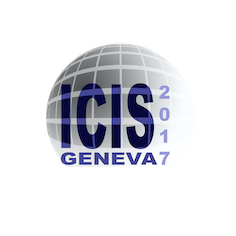Speaker
Description
The Rutherford Appleton Laboratory (RAL) is home to the ISIS Pulsed Spallation Neutron and Muon Facility and the Front End Test Stand (FETS). Both of these operational facilities use a Penning-type surface-plasma negative hydrogen (H$^–$) ion source. For research and development of the Penning H$^–$ source, a Vessel for Extraction and Source Plasma Analyses (VESPA) has been constructed. The VESPA has demonstrated excellent beam transport of up to 80 mA using a novel elliptical-aperture einzel lens. The einzel lens replaces the legacy sector dipole magnet housed inside a refrigerated box which traps cesium vapor escaping the ion source.
In parallel with the einzel lens measurements, a 2X scaled-up Penning H$^–$ ion source has been developed. This will enable improved performance at duty factors of up to 10%, with the advantage of either higher beam currents or longer lifetime due to the reduced plasma power load on cathode surfaces.
The long-term viability of the einzel lens and 2X source is now being evaluated, so new diagnostics devices have been installed. First, a pair of electrostatic deflector plates is used to correct beam misalignment and perform fast chopping, with a rise time of 24 ns. Next, a suite of four quartz crystal microbalances (QCMs) has shown that the cesium flux in the vacuum vessel is only increased by a factor of two, despite the absence of a dedicated cold trap. Finally, an infrared camera has demonstrated good agreement with thermal simulations, but has indicated unexpected heating due to beam-loss on the downstream electrode. These types of diagnostics are suitable for monitoring all operational ion sources; as such long-term behavior will be discussed.
As well as experimental campaigns and new diagnostics tools, the high-performance VSIM software package from Tech-X has been purchased recently, as well as the COMSOL multiphysics software. These will facilitate sophisticated collisional particle-in-cell (PIC) simulations of the ion source plasma, including cesium dynamics. As a first step, VSIM and COMSOL are being used for plasma simulations of two novel ion thrusters for space propulsion applications. Preliminary results will be outlined.
